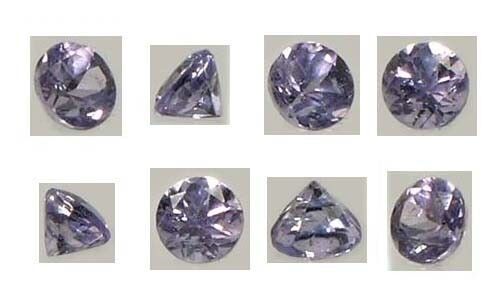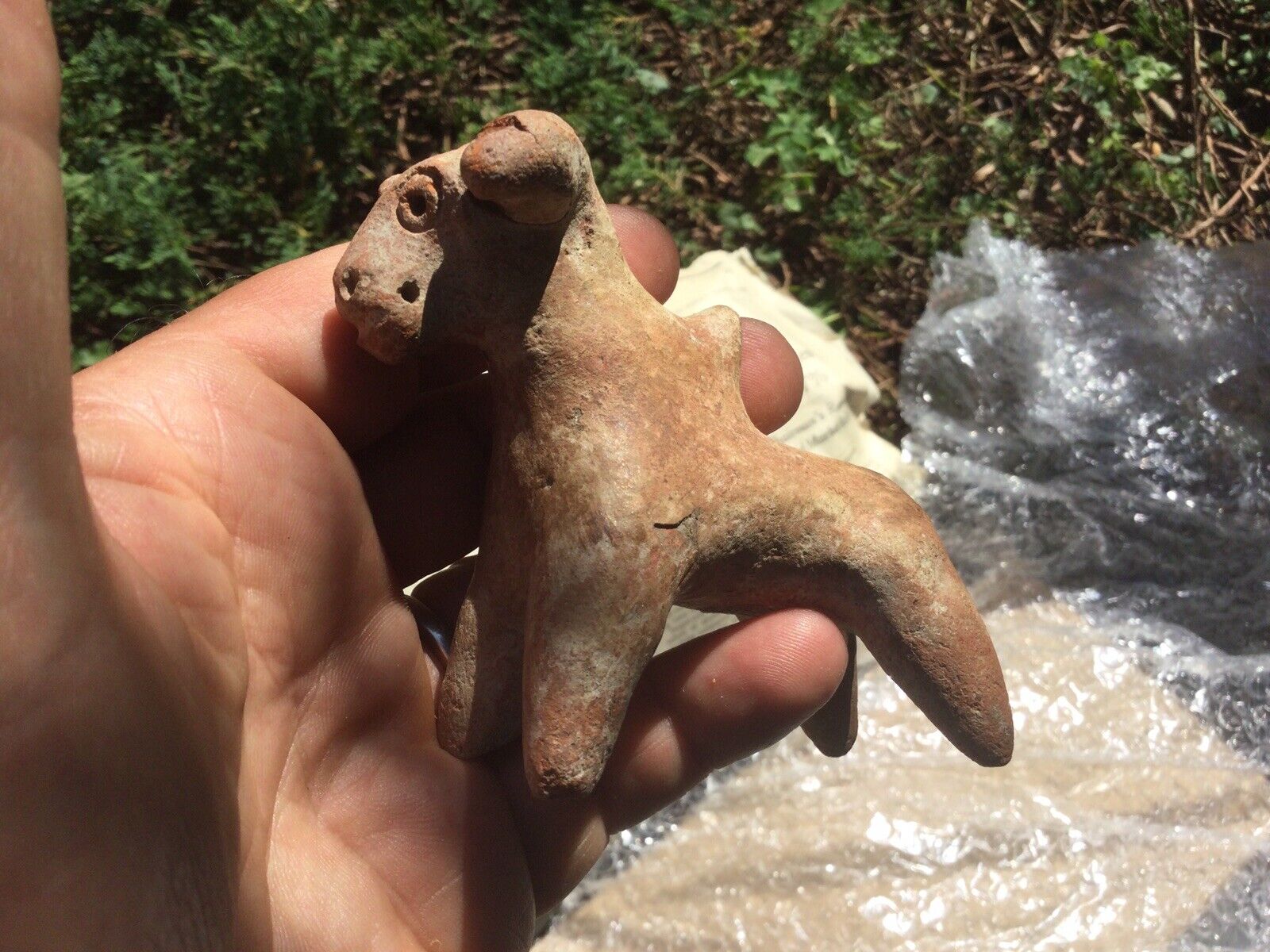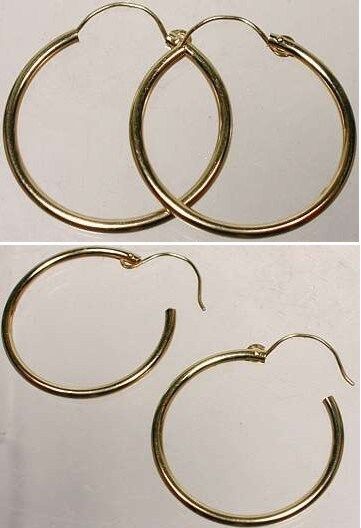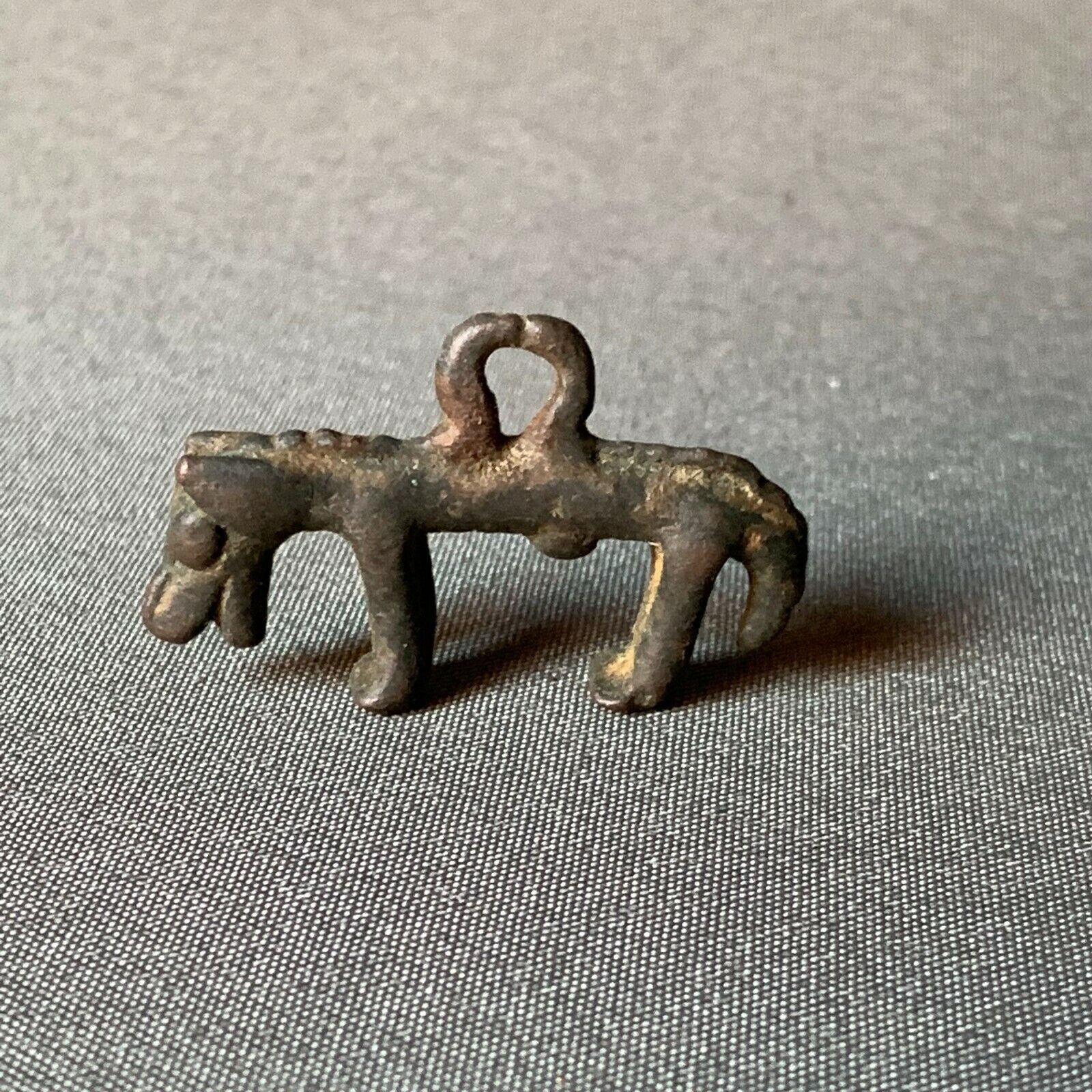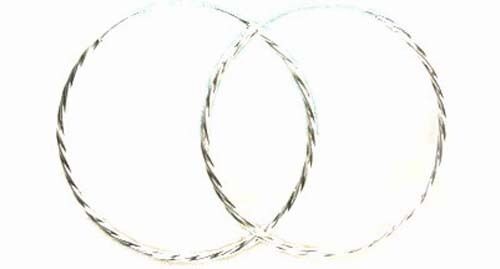-40%
Handcrafted Sparkling Purple-Blue Tanzanite Kilamanjaro Tanzania Africa
$ 26.39
- Description
- Size Guide
Description
Excellent Quality Genuine Natural Handcrafted, Hand-Faceted Periwinkle Purple-Blue Round Cut Faceted Tanzanite Gemstone.CLASSIFICATION:
Round Cut Faceted Tanzanite.
ORIGIN:
Tanzania, late 1970’s. Handcut in or near Yekaterinburg, Russia, late 1970’s.
SIZE
: Diameter: 3mm. Depth: 2mm. All measurements approximate.
WEIGHT
: 0.15 carats.
NOTES
: Upon request we can set your gemstones as a ring, pendant, or as earrings (click
here
for more information).
DETAIL:
Tanzanite is a rather rare semi-precious gemstone, found in commercial qualities and quantities only at a single mine in the Merelani Hills in the shadow of Tanzania's Mount Kilamanjaro. Geologists say that the best estimate is that the mine will be exhausted within the next 15-20 years, and it is believed extremely unlikely that significant deposits exist elsewhere on earth. Since its introduction in 1969, tanzanite for a while became the most popular gemstone in the world after diamond, ruby, sapphire, and emerald. Celebrating that heritage we offer a vintage and very pretty purple-blue tanzanite from Tanzania faceted into this beautiful "brilliant cut" faceted round. The gemstone was hand crafted and faceted by a Russian artisan, following in the footsteps of a centuries-old heritage renown for the production of the elaborate gemstones and jewelry of the Czars of Medieval, Renaissance, and Victorian Russia.
The gemstone is to the eye, virtually flawless. Even in the accompanying photo enlargements it is impossible to discern any blemishes. You need to examine this gemstone with a jeweler's loupe or a microscope to discern any blemishes (and as with most any natural gemstone, there are a few minute blemishes). Good quality tanzanite is in high demand, and can be quite costly.
As might be expected under magnification the gemstone shows the unmistakable characteristics of having been hand crafted. The coarseness of the handcrafted finish is considered appealing to most gemstone aficionados, and is not considered a detriment, or detract from the value of a gemstone. These characteristics are not only expected of hand-finished gemstones, many believe that such hand-crafted gemstones possess much greater character and appeal than today's mass-produced, laser-cut gemstones. Unlike today’s computer controlled machine produced gemstones that approach flawlessness in a perfect finish, the cut and finish of a handcrafted gemstone such as this is the cultural legacy passed onwards by artisans who lived centuries ago.
Handcrafted though it may be the gemstone possesses great luster and sparkle, and to the eye is completely transparent, but one cannot say with absolute certainty that it is entirely flawless. True, any blemishes it possesses are not visible to the naked eye, and even when magnified as in these photo enlargements here there are no discernible flaws. However we hesitate to use the word “flawless”, as sooner or later blemishes will show up at higher levels of magnification with almost every natural gemstone. An absolutely flawless gemstone is very rare in nature (and usually turns out to be synthetic). However to use trade jargon the gemstone can be characterized (at a minimum) as "eye clean". To the eye it is indeed flawless. Nonetheless close examination with a jeweler’s loupe will however reveal occasional slight irregularities in the faceting and finish. Naturally these characteristics are expected of hand-finished gemstones. However for most, the unique nature and character of handcrafted gemstones such as this more than makes up for cutting and finishing irregularities common to handcrafted gemstones, all of which are by and large are only visible under magnification.
HISTORY:
The 1960’s saw the discovery of many new gemstone varieties in East Africa. It seems likely that the most significant of these discoveries was the discovery of Tanzanite in 1967 by Portuguese-Indian prospector (originally from Goa, India) Manuel d'Souza in the Merelani Hills of Tanzania, in the shadow of majestic Mount Kilimanjaro. This breathtaking location is the only known mining site on earth for the exotic gemstone which would come to be named “tanzanite”. The stone was so named after its country of origin by Tiffany & Co. in New York, which introduced the gemstone to the marketplace in 1969. Tanzanite is the blue to violet gem variety of the mineral zoisite, the color provided by traces of vanadium. No gemstone discovered in East Africa has had more of an impact on the world gemstone market than tanzanite.
By the turn of the century, only a few decades after from its introduction, tanzanite had become one of the most popular gemstones in the world today after the “big four” (diamond, ruby, sapphire, and emerald). Acute shortages have developed from time-to-time, as there is really but one source of this exotic gemstone. Very small deposits have been found in Kenya, but until recently were not considered large enough for commercial purposes. With the insatiable demand for and short supplies of tanzanite, even these small deposits are now being mined and have even been the source of armed disputes. But they contribute insignificant amounts of material compared to the demand for this rare gemstone. New mining techniques and the liberalization of the Tanzanian economy has helped to boost production in the past few years to make tanzanite more available than ever before in the history of the gemstone.
Nonetheless tanzanite remains relatively rare, significant production coming from only one place in the world. Geologists estimate that the entire present source of tanzanite will be exhausted within the next fifteen to twenty years. Geologists say the chemical environment required to form tanzanite is so unique, chances of finding the same conditions elsewhere are next to impossible, the odds of discovering another tanzanite deposit is put at less than one in a million. The rich purples and blues of tanzanite often have a depth comparable to the finest sapphire. Paler tanzanite has a delicate periwinkle color. Tanzanite is occasionally found in green and less often yellow. Tanzanite is trichroic; that is, it shows different colors when viewed in different directions. One direction is blue, another purple, and another bronze, adding subtle depths to the color. When tanzanite is found in the ground, the bronze color dominates.
However, with gentle heating, the blue color blooms and deepens within the stone. Tanzanite can also appear differently when viewed under alternate lighting conditions. The blues appear more evident when subjected to fluorescent light, and the violet hues can be seen readily when viewed under incandescent light. According to legend, the affect of heat on tanzanite was first discovered when some brown zoisite crystals lying on the ground among other rocks were caught in a fire started by lightning that swept through the grass-covered Merelani Hills. Masai cattle herders in the area noticed the beautiful blue color of the crystals and picked them up, becoming the first tanzanite collectors. The most valuable tanzanite is medium dark in tone, vivid in saturation, and slightly violet-blue. Some people desire the more purplish to violet Tanzanite shades which are more available and affordable.
Rarely pure blue, the gem almost always displays signature overtones of purple. In smaller sizes, it tends toward lighter tones, with lavender the most common. In larger sizes, the gem typically displays deeper, richer blues and purples. It is this mesmerizing saturation of color that has made tanzanite so sought after. Beauty is in the eye of the beholder, and Tanzanite delivers. If you can appreciate a gem that is unique, less known, and rare, since it is found commercially in only one place, tanzanite is the colored gem for you. Ranging in color from a "sapphire blue" to an "amethyst purple", this very special member of the gem family delights its owner, and provides a great conversation piece with friends. A notable 122.7-carat faceted stone is on display at the Smithsonian Institution in Washington, D.C.
Throughout the history of the ancient world, gemstones were believed capable of curing illness, possessed of valuable metaphysical properties, and to provide protection. Found in Egypt dated 1500 B. C., the "Papyrus Ebers" offered one of most complete therapeutic manuscripts containing prescriptions using gemstones and minerals. Gemstones were not only valued for their medicinal and protective properties, but also for educational and spiritual enhancement. Tanzanite was unknown in the ancient world, however contemporary practitioners believe that tanzanite can encourage recovery from severe illness or stress. It is believed to be a detoxifier, to strengthen the immune system, regenerates cells, and treat ailments of the heart, spleen, pancreas, lungs, head, throat, and chest.
Tanzanite is also is believed to neutralize over acidification, reduce inflammation, stimulates fertility, and heal diseases of the reproductive organs. On the metaphysical plane, tanzanite is said to facilitate raising consciousness, aid in realizing one’s own ideas, and transform destructive urges into constructive ones. The gemstone is said to encourage awareness of the comparison between how one lives and how one could choose to live more consciously. Bringing together communication and psychic power, tanzanite is believed to aid the wearer connect with their clairvoyant powers and stimulate their ability to see visions of higher spiritual realms and to accurately communicate them. Tanzanite is said to open channels to the spiritual world of ancient tribal communities, and to elicit revelations of the primeval collective consciousness.
On a more practical level, tanzanite is said to dispel lethargy and bring repressed feelings to the surface so that they can be expressed. It is believed to help enable the wearer to transform negative energies into positive ones, and assist the wearer in manifesting their own true self rather than being influenced by others or trying to conform to the norm. If you’d like to learn more about tanzanite, there was an exceptionally good article in Time Magazine in 2007 which can be viewed
here
.
Domestic shipping (insured first class mail) is included in the price shown. Domestic shipping also
includes
USPS Delivery Confirmation (you might be able to update the status of your shipment on-line at the
USPS Web Site
). Canadian shipments are an extra .99 for Insured Air Mail; International shipments are an extra .99 for Air Mail (and generally are NOT tracked; trackable shipments are EXTRA).
ADDITIONAL PURCHASES
do receive a
VERY LARGE
discount, typically about per item so as to reward you for the economies of combined shipping/insurance costs. Your purchase will ordinarily be shipped within 48 hours of payment. We package as well as anyone in the business, with lots of protective padding and containers.
We do NOT recommend uninsured shipments, and expressly disclaim any responsibility for the loss of an uninsured shipment. Unfortunately the contents of parcels are easily “lost” or misdelivered by postal employees – even in the USA. If you intend to pay via PayPal, please be aware that PayPal Protection Policies REQUIRE insured, trackable shipments, which is INCLUDED in our price. International tracking is at additional cost. We do offer U.S. Postal Service Priority Mail, Registered Mail, and Express Mail for both international and domestic shipments, as well United Parcel Service (UPS) and Federal Express (Fed-Ex). Please ask for a rate quotation. We will accept whatever payment method you are most comfortable with. If upon receipt of the item you are disappointed for any reason whatever, I offer a no questions asked return policy. Send it back, I will give you a complete refund of the purchase price (less our original shipping costs).
We travel to Russia each year seeking antique gemstones and jewelry from one of the globe’s most prolific gemstone producing and cutting centers, the area between Chelyabinsk and Yekaterinburg, Russia. From all corners of Siberia, as well as from India, Ceylon, Burma and Siam, gemstones have for centuries gone to Yekaterinburg where they have been cut and incorporated into the fabulous jewelry for which the Czars and the royal families of Europe were famous for. My wife grew up and received a university education in the Southern Urals of Russia, just a few hours away from the mountains of Siberia, where alexandrite, diamond, emerald, sapphire, chrysoberyl, topaz, demantoid garnet, and many other rare and precious gemstones are produced. Though perhaps difficult to find in the USA, antique gemstones are commonly unmounted from old, broken settings – the gold reused – the gemstones recut and reset.
Before these gorgeous antique gemstones are recut, we try to acquire the best of them in their original, antique, hand-finished state – most of them centuries old. We believe that the work created by these long-gone master artisans is worth protecting and preserving rather than destroying this heritage of antique gemstones by recutting the original work out of existence. That by preserving their work, in a sense, we are preserving their lives and the legacy they left for modern times. Far better to appreciate their craft than to destroy it with modern cutting. Not everyone agrees – fully 95% or more of the antique gemstones which come into these marketplaces are recut, and the heritage of the past lost. But if you agree with us that the past is worth protecting, and that past lives and the produce of those lives still matters today, consider buying an antique, hand cut, natural gemstone rather than one of the mass-produced machine cut (often synthetic or “lab produced”) gemstones which dominate the market today.
Our interest in the fabulous history of Russian gemstones and the fabulous jewelry of the Czar’s led to further education and contacts in India, Ceylon, and Siam, other ancient centers of gemstone production and finishing. We have a number of “helpers” (family members, friends, and colleagues) in Russia and in India who act as eyes and ears for us year-round, and in reciprocity we donate a portion of our revenues to support educational institutions in Russia and India. Occasionally while in Russia, India, Siam, and Ceylon we will also find such good buys on unique contemporary gemstones and jewelry that we will purchase a few pieces to offer to our customers here in America. These are always offered clearly labeled as contemporary, and not antiques – just to avoid confusion. We can set most any antique gemstone you purchase from us in your choice of styles and metals ranging from rings to pendants to earrings and bracelets; in sterling silver, 14kt solid gold, and 14kt gold fill. When you purchase from us, you can count on quick shipping and careful, secure packaging. We would be happy to provide you with a certificate/guarantee of authenticity for any item you purchase from me. There is a fee for mailing under separate cover. Please see our
"ADDITIONAL TERMS OF SALE."
TRANSLATE
Arabic
Chinese
French
German
Greek
Indonesian
Italian
Hindi
Japanese
Korean
Swedish
Portuguese
Russian
Spanish
